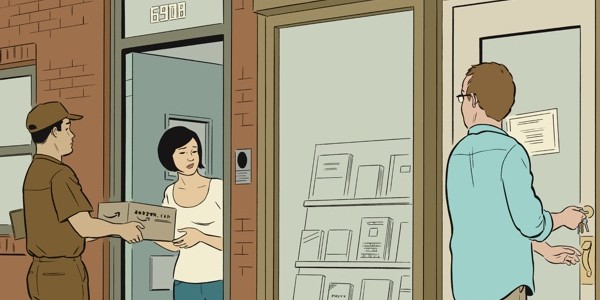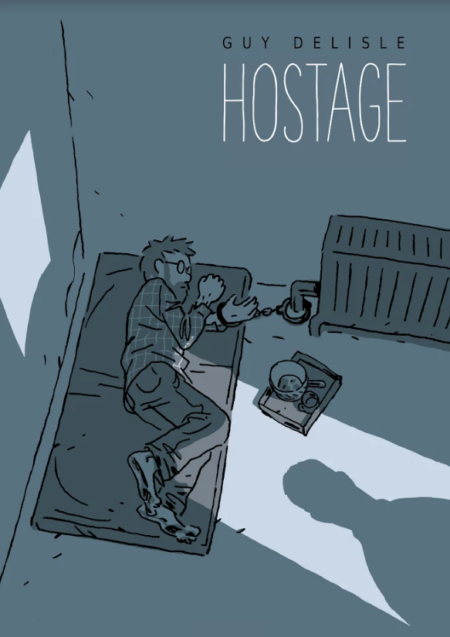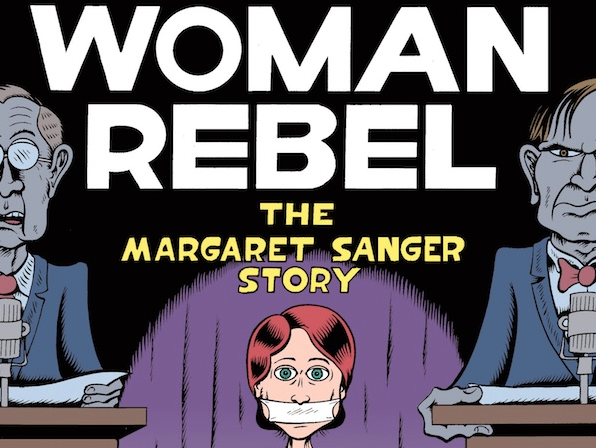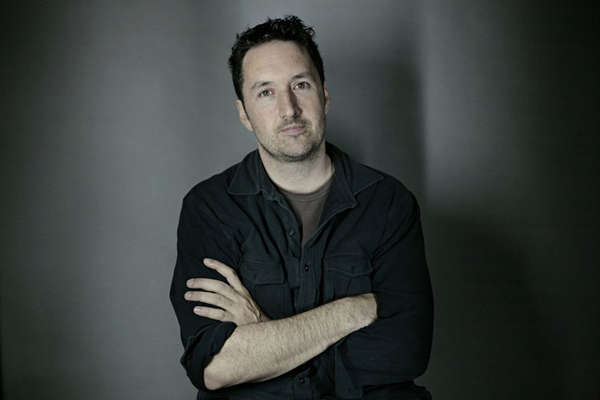
Contemporary comic book artist, writer, cartoonist and New Yorker cover artist Adrian Tomine signs his most current Drawn and Quarterly hardcover at Harvard Book Store tomorrow. New York Drawings is an anthology of New Yorker covers, record covers, and character sketches from in and around New York City. Adrian spend most of his life on the West Coast, cultivating a cult following for his Optic Nerve mini-comic. Here is an exclusive interview with Adrian touching upon his successes, the comic market, and insight into the process behind his signature clean line style.
Thanks for taking the time with us today, Adrian. The preface to New York Drawings is a short autobiographical strip wherein you find yourself at a New Yorker Christmas Party. Like a true artist, you find yourself full of self doubt, even at a point where you can be proud of your successes. Is there a lesson in humility there or was this a passing observation?
Well, I didn’t intend for it to be didactic, but I suppose if someone is putting together a book of all their work for The New Yorker, it wouldn’t hurt to add a drop or two of humility. Basically, it’s just a little story I’ve had in the back of my mind for a while now, but didn’t know what to do with.
I initially sat down to write a more traditional prose introduction for the book, and then it just seemed like it would be more interesting to do it as a comic.
Optic Nerve had it’s origins as a self-published mini-comic. Do you feel like the kind of success you had at an early age in comics could be duplicated in the market today?
I think the market has changed so much since then that what was considered “success” for me at an early age wouldn’t really register now. I was elated when five copies of my mini-comic sold at the local comic shop—now people can track the number of “hits” to their website, they get big advances for their first book, etc.
If I was any kind of success back then, it was mainly because the stakes were so low!

Was the leap from autobiographical comics to more in-depth stories about other characters a natural move? In other words, how were you able to start writing more complex stories and building your ‘world’? Did your English education at UC Berkeley drive your creative writing?
My college classes certainly exposed me to a lot of literature that would’ve been too intimidating for me to tackle on my own, but I don’t know that that had a direct influence on my comics. I mean, if you look at the stuff I was doing back then and then you look at the books I was reading for school, it would be pretty hard to find any kind of direct correlation.
I was reading the best literature ever created and I was drawing the worst comics of my career.
I think that progression towards longer, more fictionalized stories is really the result of a rather embarrassing competitive streak. I was watching a lot of other cartoonists achieve great success and acclaim with ambitious “graphic novels,” and I felt like I needed to try to at least get in the race. And now I’ve reverted back to short stories, so I guess we know now how that all played out.
Were you the first of your friends to get published and get attention for your work? Optic Nerve put you on the map as a young man.
You assume that I had friends! I actually started doing Optic Nerve in response to being an unlikeable teenage loner, so it wasn’t like I was part of some cartooning community then. And when I did eventually make some friends in the comics world, they were basically already seasoned veterans, so any little accomplishment I might’ve experienced wasn’t anything new to them.
You are also known for multiple record covers, illustrations, and your famous New Yorker covers. New York Drawings is a hardcover book composed of many of these covers, skits, and sketches. Even your sketches are of high quality and have a clean line. Are you still thrilled when you see The New Yorker on the newsstand with the logo typeset over your art?
I don’t think that drawing a cover for The New Yorker is the kind of job I can ever take for granted or become blasé about, mainly because of all the work I do, it’s the thing that still garners the biggest response by a wide margin.
If I told some in-law that I got nominated for a Harvey Award or whatever, they would have no idea what I was talking about.
But especially around here, The New Yorker is a big part of people’s everyday life.

You capture people in these little ‘moments’ that life sets us up with. Does the young man help the struggling mom with a baby carriage? He seems like he wants to, but doesn’t want to miss the train. Two readers are sharing the experience of reading the same book, stuck between stations, pausing for just a moment as their two trains are aside each other for a tiny second. These are moments that will make you feel alive and connected for a second, especially in a big city. Do you feel like an outsider in New York City? You appear to feel very at home after your transplant there.
Like most cartoonists, I think I’m kind of an observer no matter where I go. Even after living in Berkeley for fifteen years, I still felt like someone who had moved there from Sacramento. And it’s the same thing here in New York.
I’ve lived here since 2004 and I still feel like the typical West Coast transplant who complains about the weather and the bad burritos.
Recently I’ve come across two of your books, Scenes from an Impending Marriage and Shortcomings. Impending Marriage was a short and fun read about you and your wife Sarah preparing your wedding. This honest and fun book gave nods to Family Circus and Peanuts while being set in the very real world nightmare of picking guests and a DJ for the wedding. In stark contrast, Shortcomings was the story of a man sorting out why his relationships suffer. In Shortcomings, there is humor, but the laughs are more subtle and conversational. Also, race, gender, and sexuality play a huge part in Ben Tanaka’s biases in the book. Does your writing and planning process change to adapt to the kind of book you are working on?
Of course, yeah. When I was writing Shortcomings, I went out of my way to block out thoughts of how it would be received. I knew it was the kind of book that would suffer the more I worried about a hypothetical audience’s reaction. Whereas with the wedding book, I had a very specific target audience (the guests at our wedding) in mind completely, and I was basically trying to create something they’d enjoy.

Do you draw digitally or with pen and ink?
I do all my drawing with ink on paper, and just use computers to color the artwork.
Many will continue to aspire to reach some of the creative milestones you have under your belt, Adrian. Please continue to inspire. In what ways do you see challenging yourself next? Do you have any book projects coming up?
I’m working on a book of short stories in comics form, and I’m challenging myself to approach each story in some different way.
I chose this format mainly because I have a two-year-old daughter at home now, and getting any kind of work done is something of a challenge.
But I think it will be a useful book for me because in a lot of ways, I’m still trying to figure out what my own style is, and it’s nice to not feel locked into one big story for the next five years.

ADRIAN TOMINE DISCUSSES NEW YORK DRAWINGS THU 10.4.12 HARVARD BOOK STORE CAMBRIDGE 617.661.1515 7PM/ FREE @HARVARDBOOKS
[READ MORE AT DIGBOSTON.COM]




























